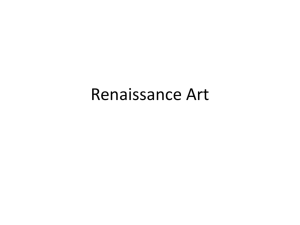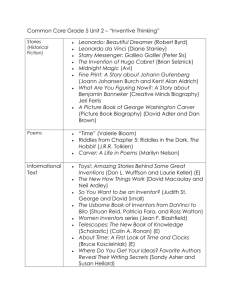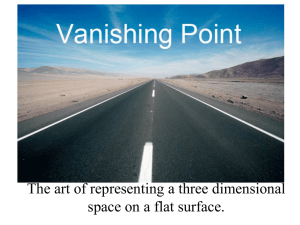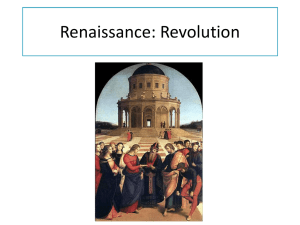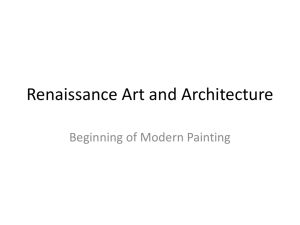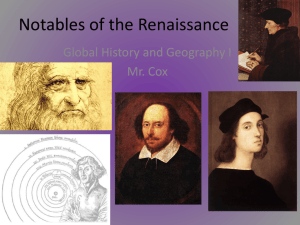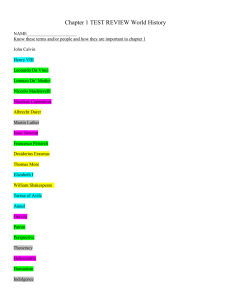WH2.2 Renaissance
advertisement
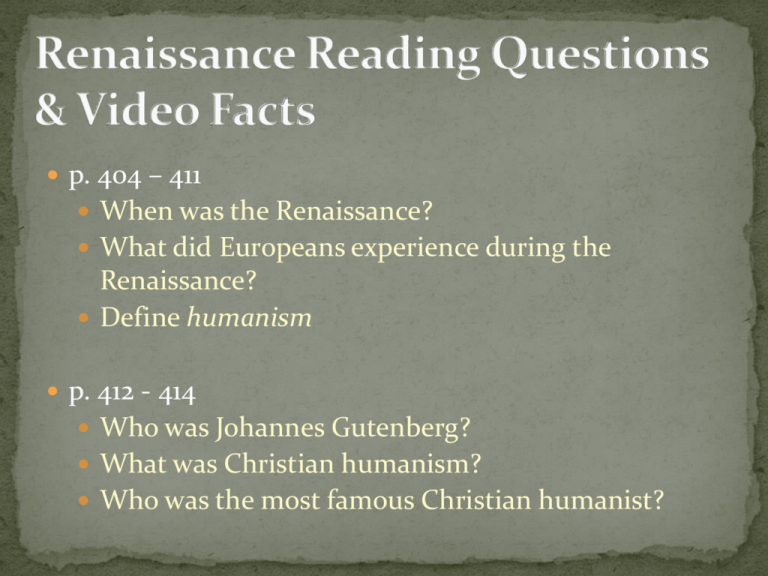
p. 404 – 411 When was the Renaissance? What did Europeans experience during the Renaissance? Define humanism p. 412 - 414 Who was Johannes Gutenberg? What was Christian humanism? Who was the most famous Christian humanist? On the same page as your Reading questions: List 5 facts from each part of the video. (2 parts) The Renaissance WHII.2b New intellectual and artistic ideas that developed during the Renaissance marked the beginning of the modern world. What were the artistic, literary, &intellectual ideas of the Renaissance? R. Rebirth of Greek & Roman classic culture Classics – ideas of ancient Rome & Greece E. Established in Italian city-states Strategically located ALL trade between Asia, Europe & Africa Merchants became very wealthy – art patrons New banking practices Credit / checking accounts Why not carry cash? B. Birth of the “modern” world Less superstition Education, literature encouraged Sports, art, music important Study of history & science I. Italian Artists – Michelangelo & Leonardo Da Vinci • painted ceiling of • invented new style of painting based on perspective Sistine Chapel •Sculpted David •Called the “Renaissance Man” (scientist, inventor, etc.) R. Renaissance spreads from Italy Northern Europe How do ideas spread? Invention of the printing press by Gutenberg (1440) T. Theater – Shakespeare wrote plays & sonnets Shakespeare – best know English playwright Romeo & Juliet Macbeth Hamlet Other accomplishments in literature Machiavelli – The Prince Guidelines for obtaining & maintaining absolute power H. Humanism driving philosophy of the Renaissance Emphasis on the “secular world,” not “afterlife” Individual has importance Questioning spirit Drew inspiration from classical civilizations Greco-Roman Erasmus Dutch humanist Wrote The Praise of Folly Made fun of church practices Lifelike looked realistic; artists studied the body Perspective had depth; 3D Emotion revealed artist’s feelings Sometimes secular (non-religious) Use the next few slides to complete your visual guide. Sistine Chapel Vatican City Michelangelo David Michelangelo La Pieta Michelangelo Man is the Measure Leonardo Da Vinci The Last Supper Leonardo Da Vinci Mona Lisa Leonardo Da Vinci Shakespearean Theater The Praise of Folly Erasmus
